如何写一篇伟大的研究论文西蒙的七个简单步骤(有点意思)
文章来自:
https://www.cis.upenn.edu/~sweirich/talks/plmw15-writing-skills.pdf
作者简介:
https://www.cis.upenn.edu/~sweirich/ 她是 HOPL-IV the Program Committee 的成员 https://hopl4.sigplan.org/track/hopl-4-papers#Call-for-Papers 委员会成员的个人主页: https://hopl4.sigplan.org/profile/stephanieweirich 计算机博士 github个人主页: https://github.com/sweirich https://www.cis.upenn.edu/~sweirich/tutorials.html 她的教程页. 加入的开源程序组 https://github.com/plclub https://www.cis.upenn.edu/~plclub/
下面是她的一个关于如何写一个研究论文,关于程序方面的论文。
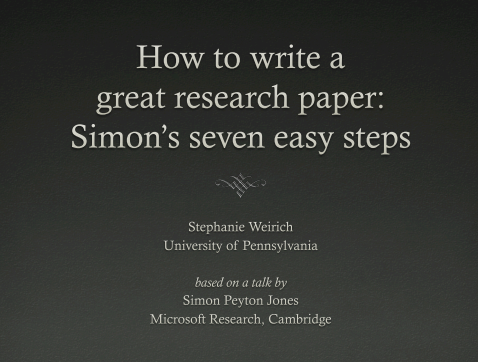

Maybe you don’t need to learn how to write a great
paper…
! It takes a lot of time & effort, shouldn’t you be doing
research?
! There are lots of bad papers out there, maybe it is not
important
! THIS IS WRONG! Good writing is a fundamental part
of research excellence.
! You will get more papers accepted
! Your ideas will have more impact
! You will have better ideas 

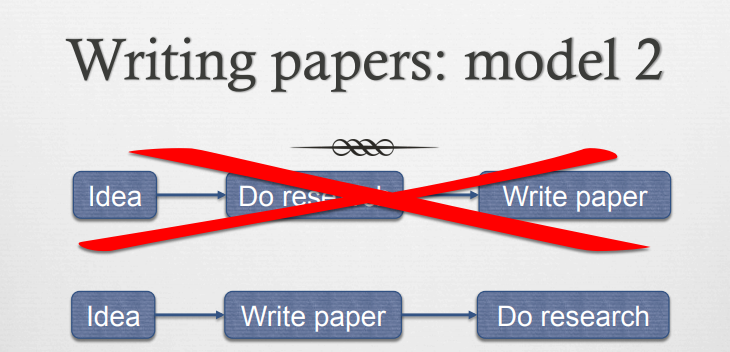
Forces us to be clear, focused
! Crystallizes what we don’t understand
! Opens the way to dialogue with others: reality check,
critique, and collaboration

Fallacy You need to have a fantastic idea before
you can write a paper. (Everyone else
seems to.)
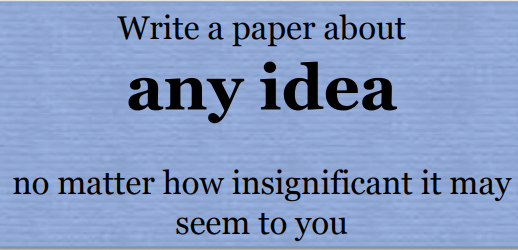

Write a paper about any idea, no matter
how insignificant it may seem to you
Writing the paper is how you develop
the idea in the first place
!It usually turns out to be more interesting
and challenging than it seems at first

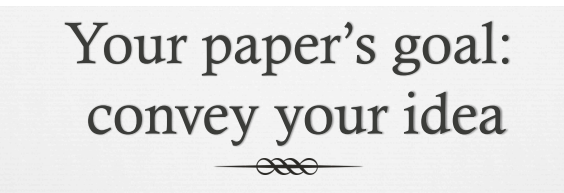
! You want infect the mind of your reader with your
idea, like a virus
Your idea must provide some re-usable
insight to the reader
Papers are the best way to communicate and record
research ideas
The greatest ideas are (literally) worthless if you keep them to yourself

Your paper should have just one “ping”
! You may not know exactly what the ping is
when you start; but you must know when you
finish
! If you have lots of ideas, write lots of papers

Make certain that the reader is in no doubt what your
idea is.
! “The main idea of this paper is....”
! “In this section we present the main contributions of
the paper.”
! Many papers contain good ideas, but do not distill what
they are.

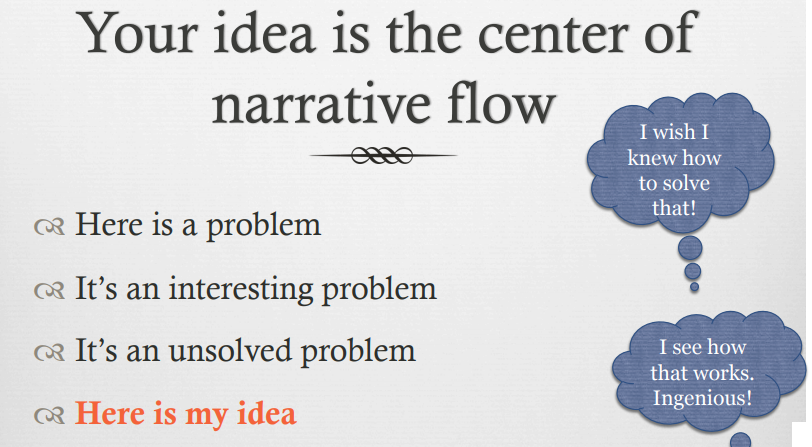
My idea works (details, data)
Here’s how my idea compares to other people’s approaches

Title (1000 readers)
! Abstract (4 sentences, 100 readers)
! Introduction (1 page, 100 readers)
! The problem (1 page, 10 readers)
! My idea (2 pages, 10 readers)
! The details (5 pages, 3 readers)
! Related work (1-2 pages, 10 readers)
! Conclusions and further work (0.5 pages)

Describe the problem
2. State your contributions
...and that is all
ONE PAGE!


“Computer programs often have bugs. It is very
important to eliminate these bugs [1,2]. Many
researchers have tried [3,4,5]. It really is very
important.”
! “Consider this program which has an interesting bug.
<brief description>. We will show an automatic
technique for removing such bugs.”

Describe the problem
2. State your contributions
...and that is all
ONE PAGE!


Write the list of contributions first
! The list of contributions drives the entire paper:
the paper substantiates the claims you have made
! Reader thinks “gosh, if they can really deliver
this, that’d be exciting; I’d better read on”
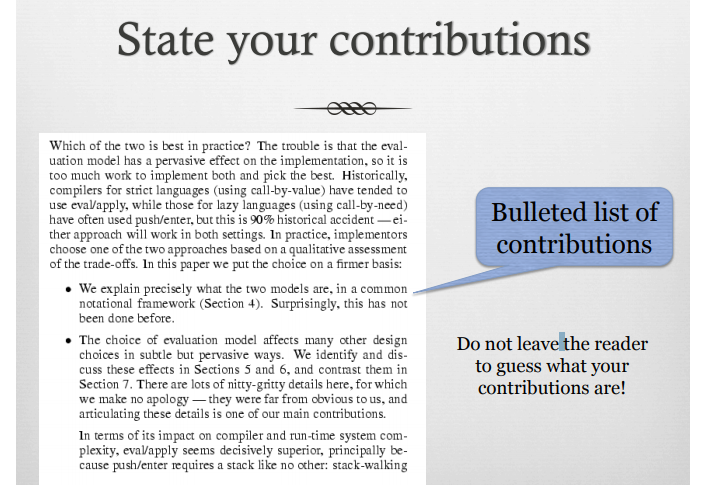
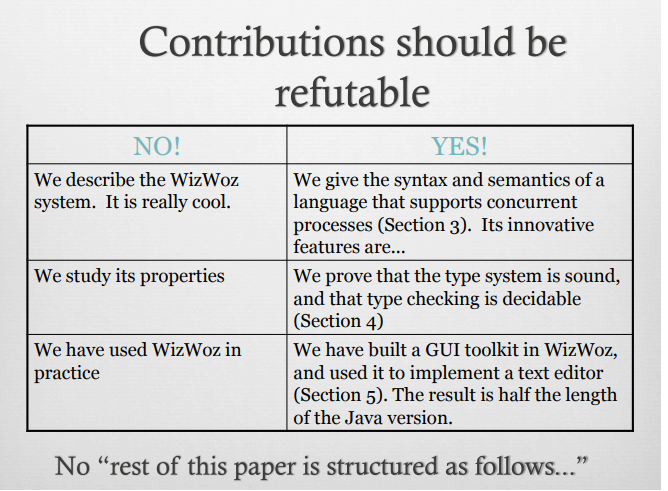

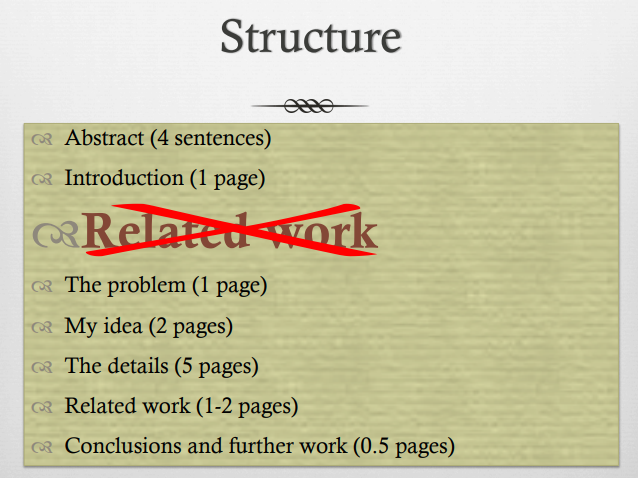
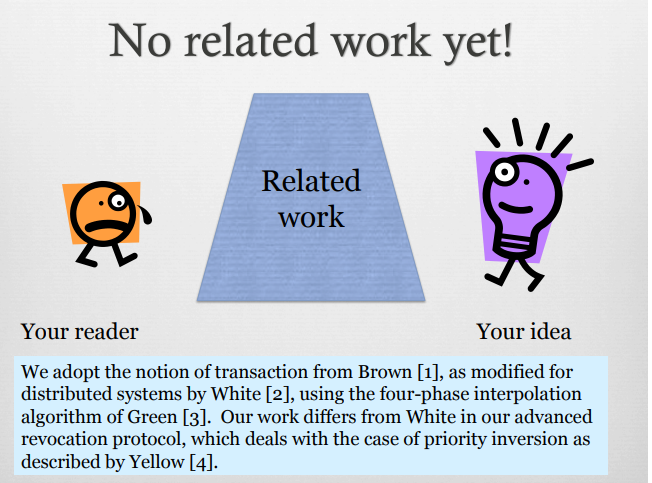

Fallacy To make my work look good, I
have to make other people’s work
look bad
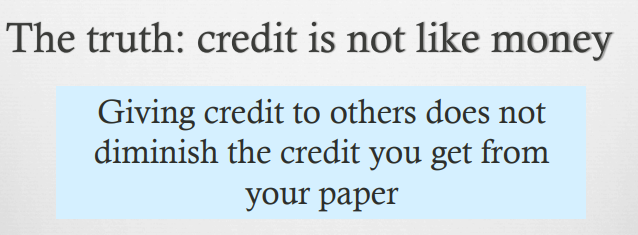
Warmly acknowledge people who have helped
you
" Be generous to the competition. “In his inspiring
paper [Foo98] Foogle shows.... We develop his
foundation in the following ways...”
" Acknowledge weaknesses in your approach


Abstract (4 sentences)
! Introduction (1 page)
! The problem (1 page)
! My idea (2 pages)
! The details (5 pages)
! Related work (1-2 pages)
! Conclusions and further work (0.5 pages)

3. The idea
Consider a bifircuated semi-lattice D, over a
hyper-modulated signature S. Suppose pi is an
element of D. Then we know for every such pi
there is an epi-modulus j, such that pj < pi
Sounds impressive...but
" Sends readers to sleep"
" In a paper you MUST provide the details,"
but FIRST convey the idea

Conveying the intuition is primary, not secondary
! Once your reader has the intuition, she can follow the details (but not vice versa)
Even if she skips the details, she still takes away something valuable
. 
Introduce the problem and
your idea using
EXAMPLES
and only then present the general case
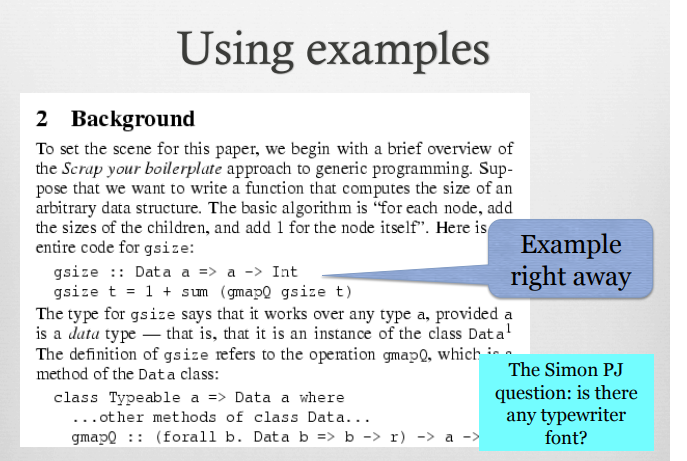

! Do not recapitulate your personal journey of discovery. This route may be soaked with your blood,
but that is not interesting to the reader.
! Do not craft a mystery novel, leaving the biggest surprise for the end.
! Instead, choose the most direct route to the idea.

Fallacy Fact
We write papers and Great papers are
give talks mainly to influential because they
impress others, gain communicate ideas to
recognition, and get readers
promoted


NO YES
The object under study was The ball moved sideways
displaced horizontally
On an annual basis Yearly
Endeavour to ascertain Find out
It could be considered that the speed of The garbage collector was really slow
storage reclamation left something to be desired
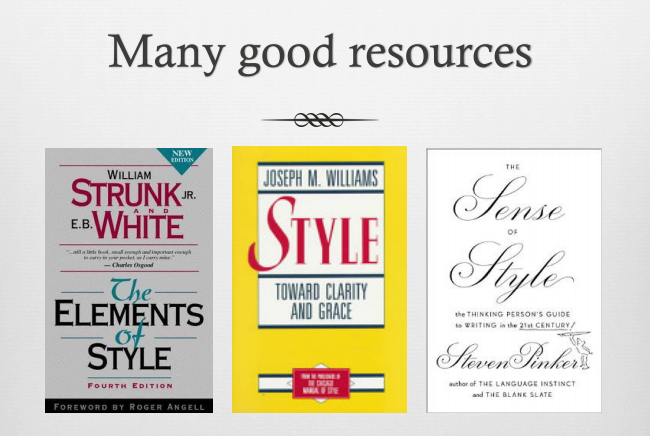


! Collaborate (via version control software)
! Get feedback from your friends
! Each reader can only read your paper for the first time
once! So use them carefully
! Get feedback from your competitors
! “Could you help me ensure that I describe your work
fairly?”
! Listen to your reviewers
! Read every criticism as a positive suggestion for
something you could explain more clearly

1. Don’t wait: write
2. Identify your key idea
3. Tell a story
4. Nail your contributions
5. Related work: later
6. Put your readers first
7. Listen to your readers


